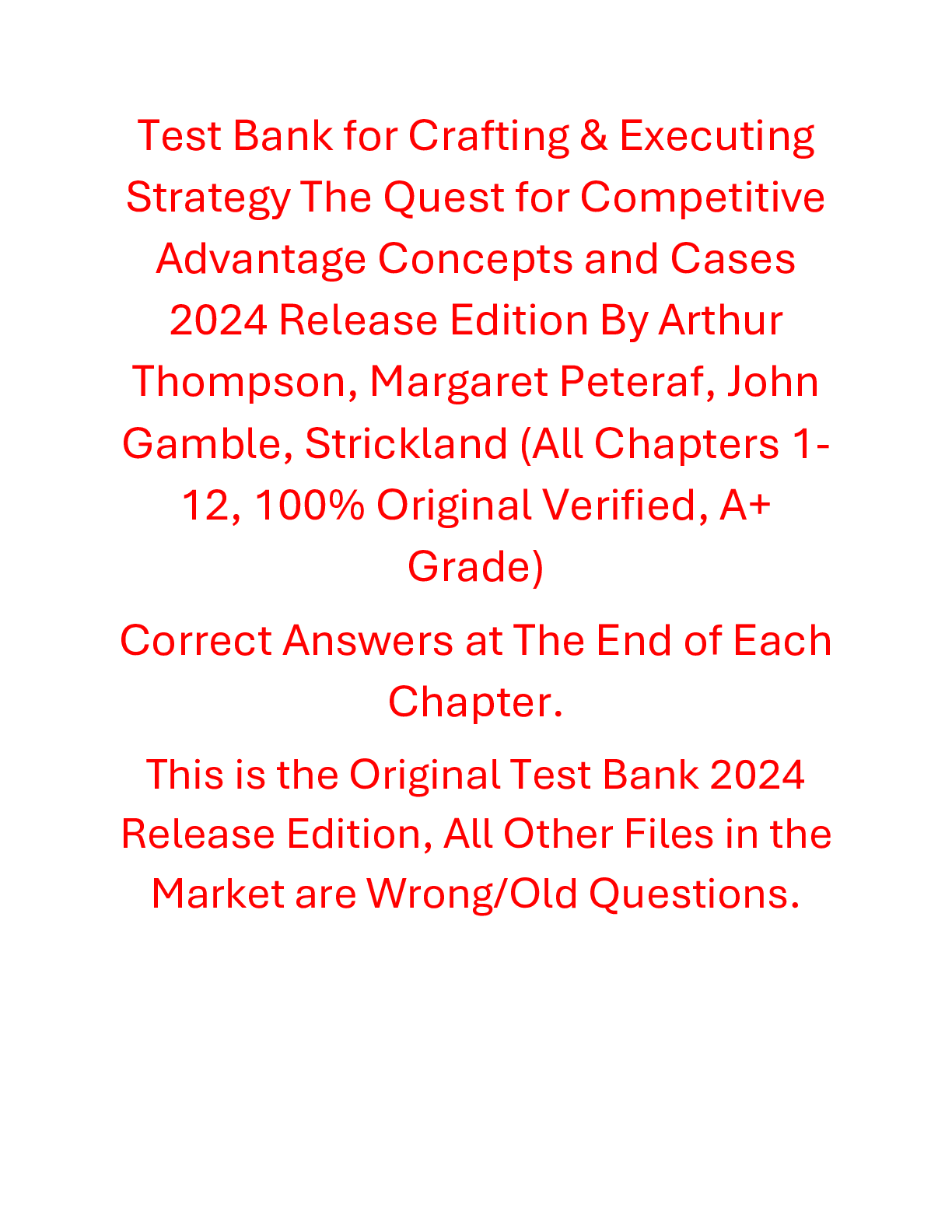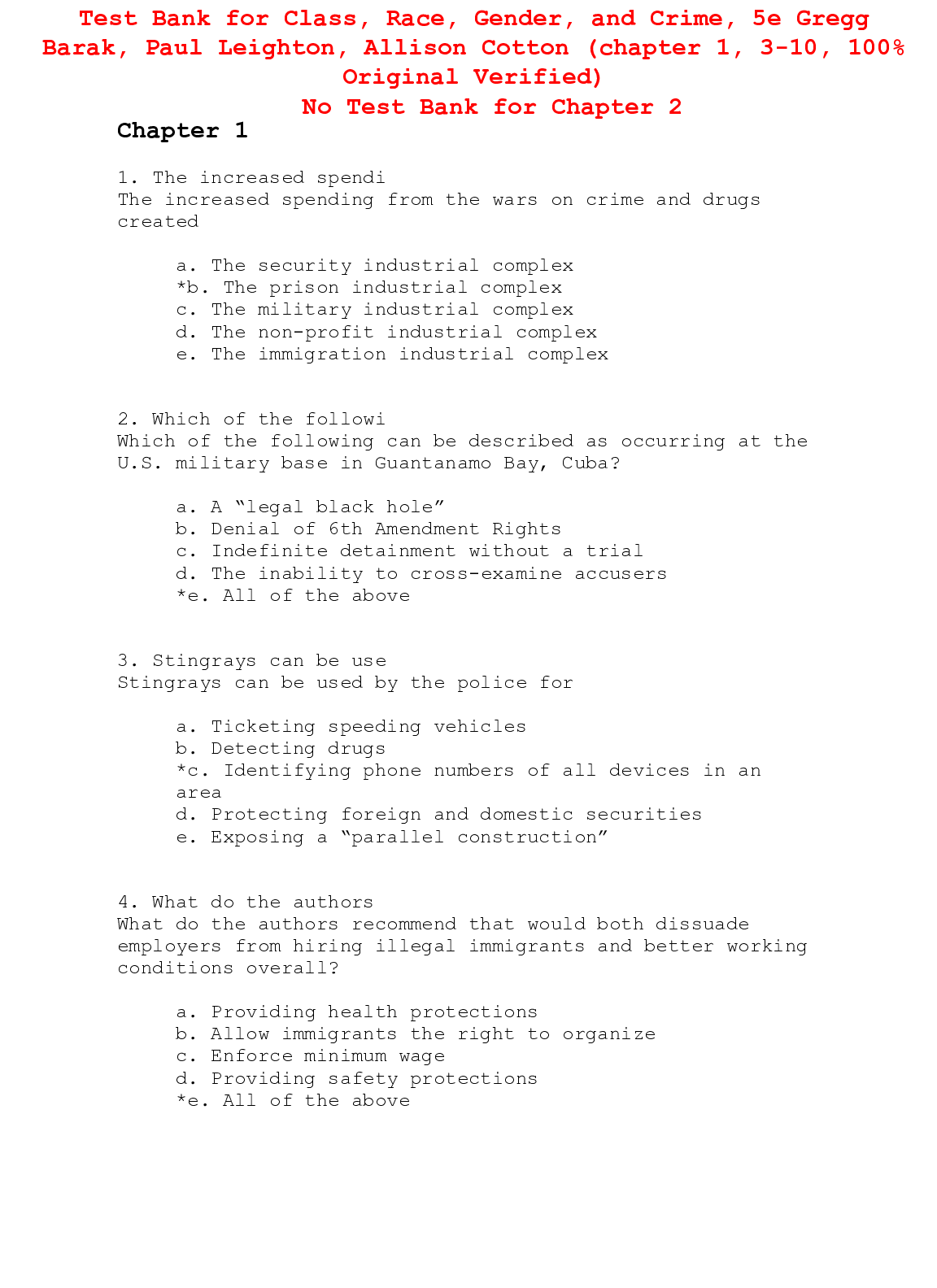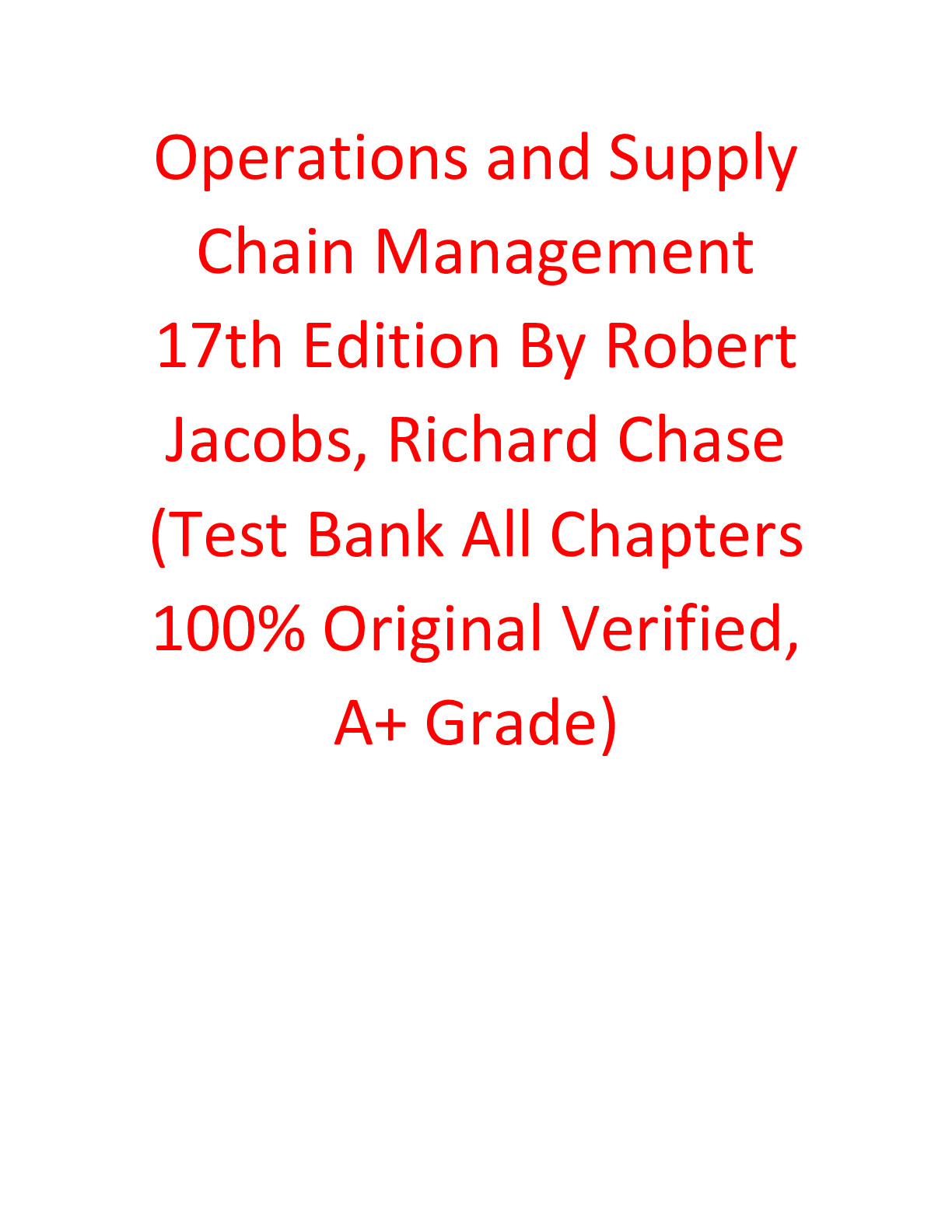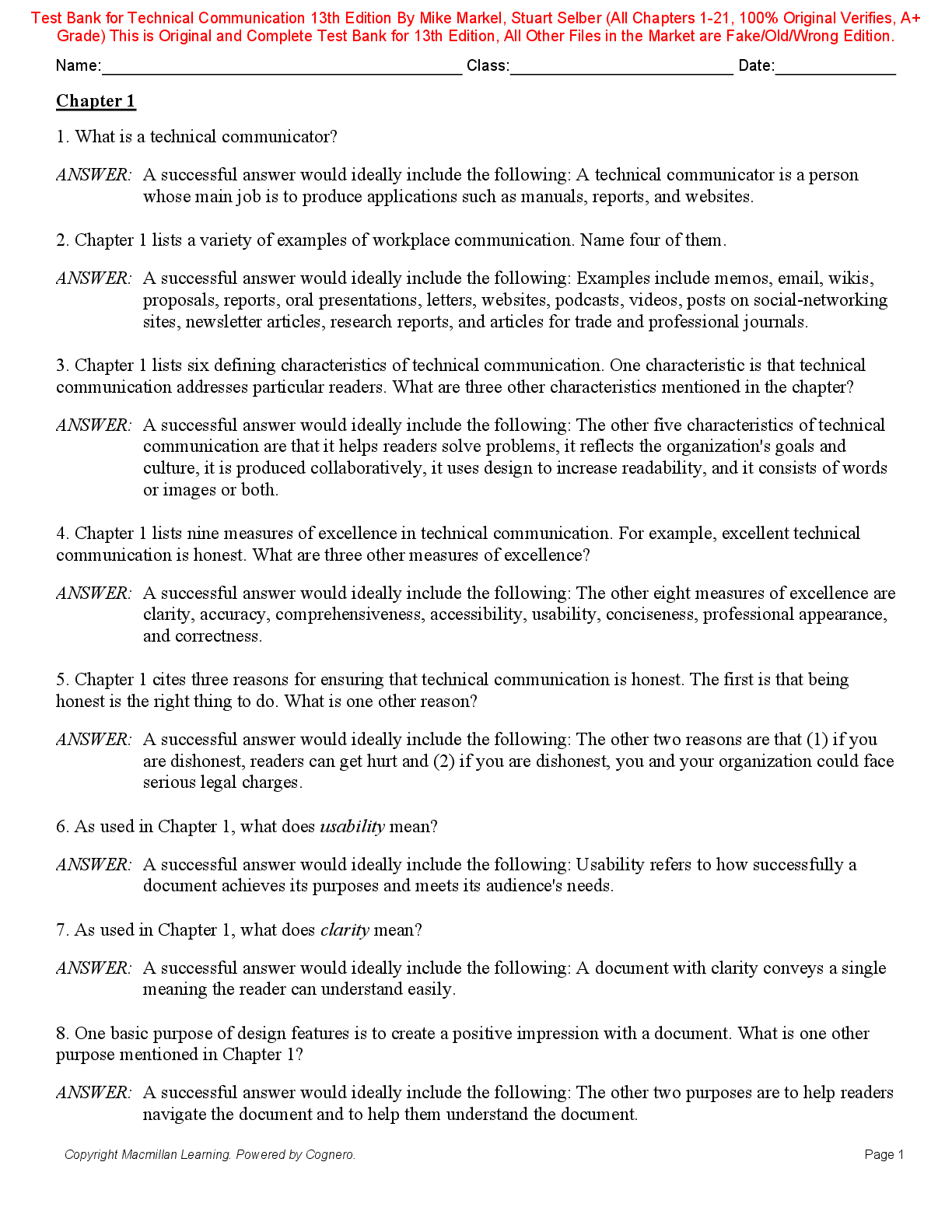Social Sciences > TEST BANKS > Essential University Physics, Volume 2, 4th edition By Richard Wolfson (Test Bank ) (All)
Essential University Physics, Volume 2, 4th edition By Richard Wolfson (Test Bank )
Document Content and Description Below
Full Version, All Chapters: Chs 1-39 Volume 1: Chs 1-19 Volume 2: Chs 20-39 1. Doing Physics 1.1 Realms of Physics 1.2 Measurements and Units 1.3 Working with Numbers 1.4 Strategies for Learnin... g Physics PART ONE: MECHANICS 2. Motion in a Straight Line 2.1 Average Motion 2.2 Instantaneous Velocity 2.3 Acceleration 2.4 Constant Acceleration 2.5 The Acceleration of Gravity 2.6 When Acceleration Isn't Constant 3. Motion in Two and Three Dimensions 3.1 Vectors 3.2 Velocity and Acceleration Vectors 3.3 Relative Motion 3.4 Constant Acceleration 3.5 Projectile Motion 3.6 Uniform Circular Motion 4. Force and Motion 4.1 The Wrong Question 4.2 Newton's First and Second Laws 4.3 Forces 4.4 The Force of Gravity 4.5 Using Newton's Second Law 4.6 Newton's Third Law 5. Using Newton's Laws 5.1 Using Newton's Second Law 5.2 Multiple Objects 5.3 Circular Motion 5.4 Friction 5.5 Drag Forces 6. Energy, Work, and Power 6.1 Energy 6.2 Work 6.3 Forces That Vary 6.4 Kinetic Energy 6.5 Power 7. Conservation of Energy 7.1 Conservative and Nonconservative Forces 7.2 Potential Energy 7.3 Conservation of Mechanical Energy 7.4 Nonconservative Forces 7.5 Conservation of Energy 7.6 Potential-Energy Curves 8. Gravity 8.1 Toward a Law of Gravity 8.2 Universal Gravitation 8.3 Orbital Motion 8.4 Gravitational Energy 8.5 The Gravitational Field 9. Systems of Particles 9.1 Center of Mass 9.2 Momentum 9.3 Kinetic Energy of a System 9.4 Collisions 9.5 Totally Inelastic Collisions 9.6 Elastic Collisions 10. Rotational Motion 10.1 Angular Velocity and Acceleration 10.2 Torque 10.3 Rotational Inertia and the Analog of Newton's Law 10.4 Rotational Energy 10.5 Rolling Motion 11. Rotational Vectors and Angular Momentum 11.1 Angular Velocity and Acceleration Vectors 11.2 Torque and the Vector Cross Product 11.3 Angular Momentum 11.4 Conservation of Angular Momentum 11.5 Gyroscopes and Precession 12. Static Equilibrium 12.1 Conditions for Equilibrium 12.2 Center of Gravity 12.3 Examples of Static Equilibrium 12.4 Stability PART TWO: OSCILLATIONS, WAVES, AND FLUIDS 13. Oscillatory Motion 13.1 Describing Oscillatory Motion 13.2 Simple Harmonic Motion 13.3 Applications of Simple Harmonic Motion 13.4 Circular Motion and Harmonic Motion 13.5 Energy in Simple Harmonic Motion 13.6 Damped Harmonic Motion 13.7 Driven Oscillations and Resonance 14. Wave Motion 14.1 Waves and Their Properties 14.2 Wave Math 14.3 Waves on a String 14.4 Wave Energy 14.5 Sound Waves 14.6 Interference 14.7 Reflection and Refraction 14.8 Standing Waves 14.9 The Doppler Effect and Shock Waves 15. Fluid Motion 15.1 Density and Pressure 15.2 Hydrostatic Equilibrium 15.3 Archimedes' Principle and Buoyancy 15.4 Fluid Dynamics 15.5 Applications of Fluid Dynamics 15.6 Viscosity and Turbulence PART THREE: THERMODYNAMICS 16. Temperature and Heat 16.1 Heat, Temperature, and Thermodynamic Equilibrium 16.2 Heat Capacity and Specific Heat 16.3 Heat Transfer 16.4 Thermal-Energy Balance 17. The Thermal Behavior of Matter 17.1 Gases 17.2 Phase Changes 17.3 Thermal Expansion 18. Heat, Work, and the First Law of Thermodynamics 18.1 The First Law of Thermodynamics 18.2 Thermodynamic Processes 18.3 Specific Heats of an Ideal Gas 19. The Second Law of Thermodynamics 19.1 Reversibility and Irreversibility 19.2 The Second Law of Thermodynamics 19.3 Applications of the Second Law 19.4 Entropy and Energy Quality PART FOUR: ELECTROMAGNETISM 20. Electric Charge, Force, and Field 20.1 Electric Charge 20.2 Coulomb's Law 20.3 The Electric Field 20.4 Fields of Charge Distributions 20.5 Matter in Electric Fields 21. Gauss's Law 21.1 Electric Field Lines 21.2 Electric Field and Electric Flux 21.3 Gauss's Law 21.4 Using Gauss's Law 21.5 Fields of Arbitrary Charge Distributions 21.6 Gauss's Law and Conductors 22. Electric Potential 22.1 Electric Potential Difference 22.2 Calculating Potential Difference 22.3 Potential Difference and the Electric Field 22.4 Charged Conductors 23. Electrostatic Energy and Capacitors 23.1 Electrostatic Energy 23.2 Capacitors 23.3 Using Capacitors 23.4 Energy in the Electric Field 24. Electric Current 24.1 Electric Current 24.2 Conduction Mechanisms 24.3 Resistance and Ohm's Law 24.4 Electric Power 24.5 Electrical Safety 25. Electric Circuits 25.1 Circuits, Symbols, and Electromotive Force 25.2 Series and Parallel Resistors 25.3 Kirchhoff's Laws and Multiloop Circuits 25.4 Electrical Measurements 25.5 Capacitors in Circuits 26. Magnetism: Force and Field 26.1 What Is Magnetism? 26.2 Magnetic Force and Field 26.3 Charged Particles in Magnetic Fields 26.4 The Magnetic Force on a Current 26.5 Origin of the Magnetic Field 26.6 Magnetic Dipoles 26.7 Magnetic Matter 26.8 Ampère's Law 27. Electromagnetic Induction 27.1 Induced Currents 27.2 Faraday's Law 27.3 Induction and Energy 27.4 Inductance 27.5 Magnetic Energy 27.6 Induced Electric Fields 28. Alternating-Current Circuits 28.1 Alternating Current 28.2 Circuit Elements in AC Circuits 28.3 LC Circuits 28.4 Driven RLC Circuits and Resonance 28.5 Power in AC Circuits 28.6 Transformers and Power Supplies 29. Maxwell's Equations and Electromagnetic Waves 29.1 The Four Laws of Electromagnetism 29.2 Ambiguity in Ampère's Law 29.3 Maxwell's Equations 29.4 Electromagnetic Waves 29.5 Properties of Electromagnetic Waves 29.6 The Electromagnetic Spectrum 29.7 Producing Electromagnetic Waves 29.8 Energy and Momentum in Electromagnetic Waves PART FIVE: OPTICS 30. Reflection and Refraction 30.1 Reflection 30.2 Refraction 30.3 Total Internal Reflection 30.4 Dispersion 31. Images and Optical Instruments 31.1 Images with Mirrors 31.2 Images with Lenses 31.3 Refraction in Lenses: The Details 31.4 Optical Instruments 32. Interference and Diffraction 32.1 Coherence and Interference 32.2 Double-Slit Interference 32.3 Multiple-Slit Interference and Diffraction Gratings 32.4 Interferometry 32.5 Huygens' Principle and Diffraction 32.6 The Diffraction Limit PART SIX: MODERN PHYSICS 33 Relativity 33.1 Speed c Relative to What? 33.2 Matter, Motion, and the Ether 33.3 Special Relativity 33.4 Space and Time in Relativity 33.5 Simultaneity Is Relative 33.6 The Lorentz Transformations 33.7 Energy and Momentum in Relativity 33.8 Electromagnetism and Relativity 33.9 General Relativity 34. Particles and Waves 34.1 Toward Quantum Theory 34.2 Blackbody Radiation 34.3 Photons 34.4 Atomic Spectra and the Bohr Atom 34.5 Matter Waves 34.6 The Uncertainty Principle 34.7 Complementarity 35. Quantum Mechanics 35.1 Particles, Waves, and Probability 35.2 The Schrödinger Equation 35.3 Particles and Potentials 35.4 Quantum Mechanics in Three Dimensions 35.5 Relativistic Quantum Mechanics 36. Atomic Physics 36.1 The Hydrogen Atom 36.2 Electron Spin 36.3 The Exclusion Principle 36.4 Multielectron Atoms and the Periodic Table 36.5 Transitions and Atomic Spectra 37. Molecules and Solids 37.1 Molecular Bonding 37.2 Molecular Energy Levels 37.3 Solids 37.4 Superconductivity 38. Nuclear Physics 38.1 Elements, Isotopes, and Nuclear Structure 38.2 Radioactivity 38.3 Binding Energy and Nucleosynthesis 38.4 Nuclear Fission 38.5 Nuclear Fusion\ 39. From Quarks to the Cosmos 39.1 Particles and Forces 39.2 Particles and More Particles 39.3 Quarks and the Standard Model 39.4 Unification 39.5 The Evolving Universe APPENDICES A. Mathematics B. The International System of Units (SI) C. Conversion Factors D. The Elements E. Astrophysical Data Answers to Odd-Numbered Problems [Show More]
Last updated: 2 years ago
Preview 1 out of 325 pages
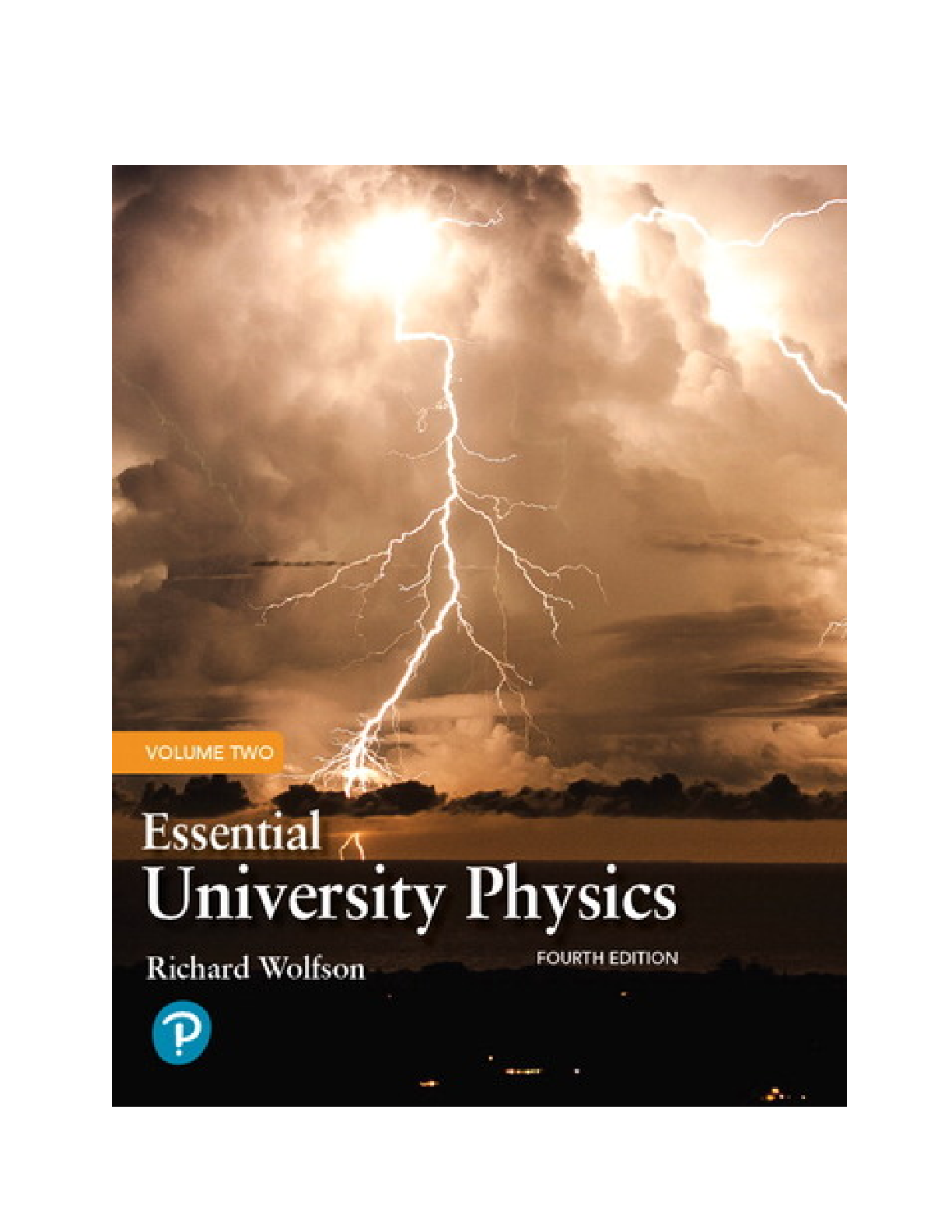
Buy this document to get the full access instantly
Instant Download Access after purchase
Buy NowInstant download
We Accept:

Reviews( 0 )
$25.00
Can't find what you want? Try our AI powered Search
Document information
Connected school, study & course
About the document
Uploaded On
Nov 20, 2022
Number of pages
325
Written in
Additional information
This document has been written for:
Uploaded
Nov 20, 2022
Downloads
0
Views
149

